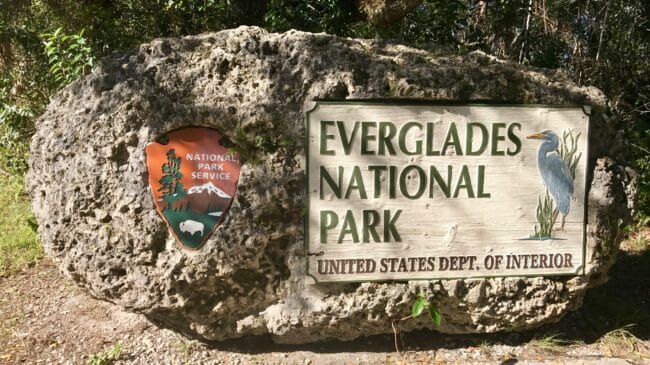Florida Gov. Ron DeSantis recently vetoed legislation that would have hampered environmental restoration efforts in the Everglades region. This move is consistent with the governor’s recent record of advancing restoration projects for the Everglades. The legislation, Senate Bill 2508, was a priority of outgoing State Senate President Wilton Simpson who is currently running to be Florida’s agricultural commissioner.
Among other provisions, Senate Bill 2508 would have created new requirements for the South Florida Water Management District (SFWMD) to certify “that its recommendations to the United States Army Corps of Engineers are consistent with all district programs and plans” before the release of state funds. A previous version of the bill required SFWMD to ensure that its plans did not “diminish the quantity of water available to existing legal users.”
This language was interpreted by environmental groups to favor the interests of agricultural producers in the region to the detriment of environmental restoration efforts. Flexibility regarding the management of water within Lake Okeechobee is key to several restoration goals in the region. While DeSantis noted that the final version passed by the legislature was “an improvement over what was originally filed,” he maintained that it would create “unnecessary and redundant regulatory hurdles that may compromise the timely execution and implementation of Everglades restoration projects, water control plans, and regulation schedules.”
As the Tampa Bay Times reported:
After opponents swarmed legislators with nearly 40,000 petitions and more than 1,200 phone calls, senators reversed course, removing provisions in the bill that advocates said would have led to toxic discharges, more Red Tide blooms and dead fish on beaches.
Still, advocates said the final version of the bill would have knelt to agriculture interests and been detrimental for Florida’s conservation and environment.
DeSantis on Wednesday announced the veto to loud applause during a news conference in Fort Myers Beach. “I’ve heard you; we’ve vetoed that today,” he said.
Gov. DeSantis has made the restoration of the Florida Everglades one of his policy priorities. The Florida Legislature has largely acted in lockstep with the governor’s agenda, passing substantial reforms in recent years. State lawmakers have allocated additional money to fund ongoing infrastructure projects, imposed harsher penalties on water polluters, and provided state and federal agencies greater flexibility in the management of water flows through the series of canals, storage reservoirs, and treatment areas.
Decades of water mismanagement have resulted in the deterioration of the Everglades ecosystem and a series of toxic blue-green algae blooms in waterbodies throughout central and south Florida. In July of 2020, Reason Foundation released a comprehensive report providing the historical context of Florida’s water management issues, an overview of current challenges and ongoing projects in the state, and several recommendations for future restoration efforts. The state’s actions have largely been in line with the 2020 report’s recommendations.
A significant problem restoration efforts seek to solve is that of algal blooms, which occur when large amounts of nutrients enter a body of water. The algae feed on the nutrients and grow until a slimy, green layer is formed on the water’s surface. The recent blooms in Florida originated predominately in Lake Okeechobee before spreading to St. Lucie and Caloosahatchee estuaries.
The spread of blooms to the coasts is the result of state and federal infrastructure projects which block the natural flow of water south to the Everglades and Florida Bay. Beginning in the 1850s, wetlands in the historic Everglades region were drained and cleared for human settlement. A series of devastating hurricanes and floods in the early 1900s prompted the construction of the Herbert Hoover Dike surrounding Lake Okeechobee and a series of canals to the east and west to divert water through the St. Lucie and Caloosahatchee rivers when water levels in the lake climb too high.
Severe algal blooms have become more frequent over recent years, prompting state of emergency declarations in 2016 and 2018. These episodes were largely triggered by major storm events and higher-than-average rainfall in those years.
Mitigating toxic algal blooms will require a reduction in discharges to the coast and, to some extent, allowing additional water to flow south. Such changes to the current management and flow of water will require flexibility on the part of the SFWMD and the Army Corps of Engineers. As Gov. DeSantis recognized, the requirements included in SB 2508 may have imposed unnecessary obstacles to that flexibility.
Florida lawmakers have taken significant steps to advance restoration goals and speed up various projects that have been in progress for nearly two decades. Gov. DeSantis’ veto of Senate Bill 2508 will help ensure that progress continues.

